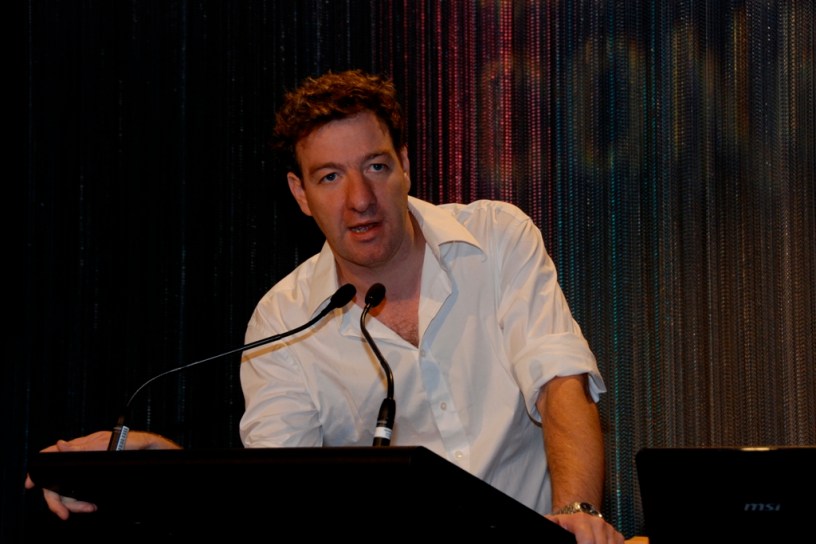In 2006 – the year I migrated to Australia – Film Australia made its submission to the federal government’s film funding review. That year my ignorance prevailed when I was occupied programming my first Australian International Documentary Conference (AIDC) as its new director.
Encouraged by industry anger about the terms of trade, role and direction of Film Australia, I programmed a keynote address that criticised the six-decade-old institution and put some more fuel on the already burning fire. The keynote by Wall to Wall’s chief executive Alex Graham was meant to alter the terms of engagement, but it set the tone for a further attack on Film Australia as a whole. Unfortunately the industry mobilisation happened at a time the federal government was keen to cut some costs and a golden opportunity arose to axe Film Australia with seemingly the full blessing of stakeholders in the documentary community.
Had I paid more attention to Film Australia’s submission, I would have realised the deep cultural importance of the institution as the people’s production house. I believe cost-cutting was the true reason behind the demise of the agency – there is no other logical explanation why a small industry would liquidate such a national public asset. Unfortunately Film Australia only made it to the age of 61. Something Australia has always understood very well is the importance of documenting its history. The national documentary history exists parallel with federated Australia’s narrative of nation building, starting with the first multi-camera documentary The Inauguration of the Commonwealth in 1901, and onwards to the present day.
For more than 100 years a collection of works has been created that embodies a moving account of the history of this nation. The commissioning of these works has been a public matter for decades. When Film Australia came to an end, so did this tradition. The financing sources are still the same though. Documentary today is still predominantly a taxpayer-funded affair.
The distribution of the funds might have changed, but we – the people – are still paying for the works. So who is looking after the taxpayers’ interests at the moment? Who is in charge of commissioning the new additions to our collective moving picture account?
The volatile nature of the multichannel broadcast environment has drastically changed the character of public television. The purpose of television programs is to attract as many viewers as possible at first broadcast. It is as transient as that. The channel programmer’s interest lies not in creating and maintaining an audiovisual account of Australia’s progress for future reference and safe keeping, so why do we expect them to take on this responsibility? It isn’t a fair call and they hardly seem to be the best fit for the job. We can merely hope that as a fringe benefit we end up with some nice pieces for the archives.
Without Film Australia, the public has lost the ability to properly document its history. As an industry we have to take responsibility for the public, but also for our own good. The fact that no member of the public, no member of parliament, not even a teacher or historian, stood up and protested against the closure of Film Australia means that documentary makers, as public service artists, have lost their connection with the society they serve.
Often originating from video collectives-then-turned individualistic entrepreneurs, documentary filmmakers’ social engagement has been institutionalised and industrialised. The only time we stand shoulder-to-shoulder is when we are outraged about some draft guidelines and funding proposals. The government agencies stand with their backs to the people they are serving, the general public, and conduct industry consultation after industry consultation discussing policy detail in terms that are hardly comprehensible.
Both filmmakers and agencies should focus their energy on consulting the public. We managed to rob them of their valuable public asset, their production house, without them even noticing it, and even if they might have noticed, they did not give a shit. How can we expect to get more funding and distribution outlets if we aren’t able to convince the audience of the importance of our work? We have to embrace and support the advocates that bring our works to audiences. Passionate people like Sydney Film Festival program director Jenny Neighbour or Antidote’s Gil Scrine. We need to engage the public and build the notion of documentary as a vital part of our cultural fabric. We need to force the National Film and Sound Archive to unlock the Film Australia collection and share it with the people. We need to stop being so obsessed about guidelines and policy and join forces to build the documentary brand.
There are far less purposeful products that have managed to occupy a notion of necessity in people’s lives, so it is not impossible. In a marketing-driven democracy, public approval and loyalty is essential. Currently we are debating what the definition of a documentary should be – a discussion sparked by questions about eligibility of certain programs for certain funding sources.
In true Australian documentary industry fashion, we are falling over each other trying to figure out and argue about what the effects of the eventual flavour of the definition would mean for our individual professional practice. Considering we have already robbed Australians of their production house, maybe we should avoid the risk of robbing them of documentary all together and leave the task of defining up to them.
At least it would be a great exercise in public engagement.
The Australian International Documentary Conference (AIDC) is being held this week in Adelaide, from today (February 27) until Thursday. For more information go to www.aidc.com.au.



